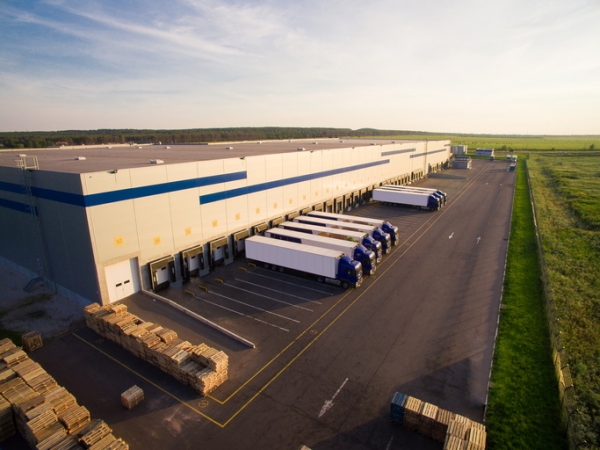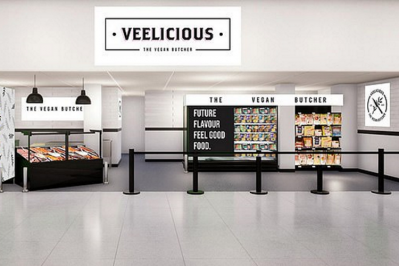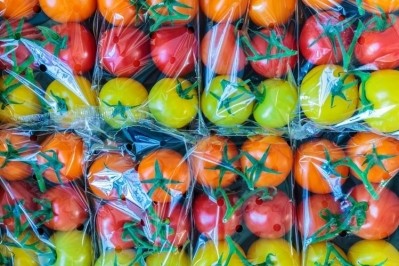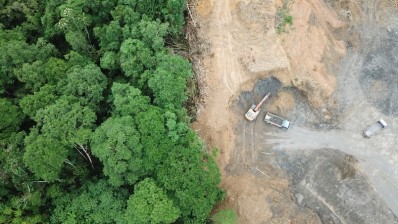Food industry failing to address supply chain emissions: ‘Engagement is relatively shallow’

Research from non-profit CDP has revealed that 90% of all disclosed emissions in the food sector come from supply chains. But just 16% of food companies have targets that address supplier emissions.
CDP - which assessed 504 large corporations involved in food production, processing and retail – found a ‘failure’ to address climate and environmental impacts beyond direct operations.
“The food value chain is responsible for around a quarter of global GHG emissions, so it is essential to the transition to net-zero,” CDP Global Director of Corporations & Supply Chains, Dexter Galvin, told FoodNavigator. “Despite the food value chain being particularly vulnerable to climate risk, value chain engagement is relatively shallow in this area and there is scope for improvement.”
CDP, which runs a global disclosure system for investors and companies, stressed that managing climate risk is particularly important for businesses who are exposed to the implications of global heating and extreme weather such as drought in their supply chains. This, Galvin suggested, must be done in collaboration with suppliers in the food chain.
“For companies in the food sector, engaging with suppliers is enormously important for addressing the physical risks from climate change and taking the appropriate action to adapt to, or mitigate, these risks."
The power of procurement
Galvin believes that emissions targets should be embedded in the KPIs of procurement teams.
“A company’s environmental impacts do not end at the office door or the factory gate. For most companies, supply chain impacts are far greater than direct operational impacts. In the case of GHG emissions, supply chain emissions are 5.5 times greater on average, according to CDP data. Supply chain engagement is therefore crucial to achieving ambitious sustainability goals. This is why science-based targets require companies to include their supply chain if it covers more than 40% of their emissions, which they almost always do.”
CDP’s disclosure system is one tool that Galvin says can help food and beverage companies measure their supply chain impact and understand supplier performance. This, he suggested, will allow businesses to set ‘the most robust’ scope 3 targets and track progress. “CDP’s 150-plus supply chain members, including major food companies like Kellogg Company, PepsiCo and ABInbev, use CDP data from their suppliers in their procurement decisions and supplier engagement, such as supplier scorecards and appraisals.”
There is also scope for greater carbon collaboration, Galvin continued. An approach, he stressed, that makes sound business sense.
“From the perspective of brands and retailers, there is great business potential in working with suppliers and helping to build their capacity – doing so is often mutually beneficial,” the sustainability expert said, pointing to a 2019 survey that found that 95% of CDP supply chain members found suppliers that show ‘environmental leadership' make better business partners.
“Integrating sustainability into procurement and working with suppliers uncovers opportunities for cost savings and efficiency improvements, delivering financial benefits. However, in some cases, it may be necessary to deselect suppliers that refuse to engage or disclose their environmental impacts.”
Demanding disclosure
“Food brands and retailers should request their suppliers to disclose their impacts, to set science-based targets, and support them to build their capacity for sustainable food production,” he suggested.
Manufacturers should take a tough line with suppliers that fail to disclose their environmental footprint, CDP believes.
This underlines the importance of ensuring transparency – something Galvin noted ‘remains a challenge’. But, while it might not be easy, transparency is absolutely vital if the food sector is to build more sustainable – and resilient – supply chains.
Galvin observed: “Traceability and transparency are crucial to getting a clear understanding of the environmental impact of a company’s supply chain.”
Forest disclosure, for instance, is particularly ‘lacking’, the Sustainable Food Systems report concluded. CDP found 51% of companies expected to disclose on palm oil-related deforestation risk did so, and only 45% and 41% did so for soy and cattle, respectively.
So, what change does Galvin want to see in the food sector?
The starting point, he stressed, is this transparency piece. “The first step to driving change is understanding where change is needed, and that starts with transparency. Through disclosures, companies should endeavour to measure, manage, and report climate and environmental risks throughout their value chain.
“Second, companies need to understand their risks by conducting analysis, fully understanding the impacts of their value chains by engaging with their suppliers.
“On top of this, companies should be looking to implement forward-looking mechanisms to plan for the low-carbon transition. This includes setting verified science-based emissions reduction targets for scope 1, 2, and 3 emissions, as well as conducting scenario analysis and setting internal carbon prices.”
Reason for optimism
While the report flagged failings in the food sector’s approach to climate impact, there is also reason for optimism.
One encouraging sign is the year-on-year increase in food value chain companies setting ambitious decarbonization targets (75 companies have committed to or have set science-based targets, which is 16% of the full sample).
The analysis also found that food companies are responding to growing consumer demand for healthy and sustainable products by producing more foods made from plant proteins. One-third of all business opportunities disclosed to CDP related to new products and services, such as offering vegan options.
“Best practice in the food sector dictates setting science-based targets, working to eliminate deforestation and water quality management, and achieving these goals through utilizing internal GHG and water pricing, diversifying protein supplies (for meat producers), exploring nature-based solutions and engaging with suppliers to innovate and problem-solve,” Galvin told us.
He pointed to a number of instances where F&B corporations are putting this into practice. Starbucks, for example, found climate change-driven pest increases were causing the cost of coffee production to rise as much as 30% for some of their smallholder suppliers. In response, the company has committed to providing 100 million healthy coffee trees to farmers, reasoning that the investment ‘makes existing lands more productive and keeps farmers from expanding into forests’.
“Danone is investing in restorative sustainable agriculture with its suppliers through a Danone Ecosystem Fund, and General Mills is investing in the switch to organic agriculture in response to shifting consumer demand,” Galvin continued.
For the food sector, business-as-usual is not an option. “As the demand for food has grown, so has the resulting surge in emissions, loss of natural ecosystems and forests, increasing water scarcity and pollution and declining biodiversity. But a better future is possible. Companies have a remarkable opportunity to build a just, fair and sustainable food system that meets the needs of the world’s population without exceeding our planetary boundaries.”




















